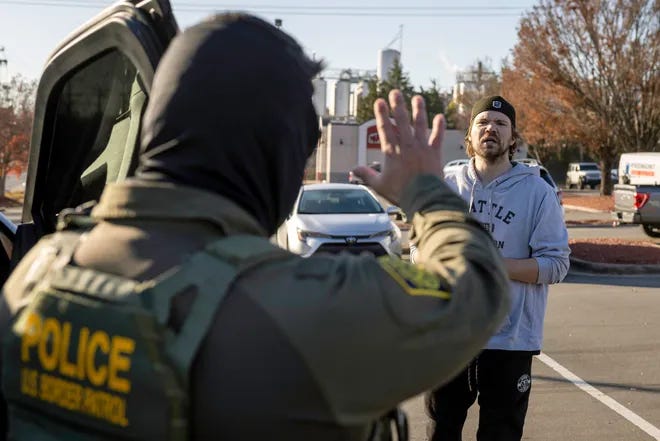North Carolina Residents Slashed ICE Agent Tires as They Slept
... and they continue to protest in more brave ways
Resistance can look like many things, and in North Carolina, slashing ICE agents’ vehicles is one of them.
For a couple of weeks now, ICE has been terrorizing North Carolina. They’ve been invading the streets of Charlotte and the suburbs the same way that they did in Chicago. Go up to random people, racially profile, and arrest them if they look undocumented.
Protestors came together and found out where these ICE agents are staying since the government puts them in hotels. They then went, in the middle of the night, and slashed their tires. They only arrived in North Carolina late last week, and protestors have already tracked their locations effectively enough to cause damage.
It gets even better: on Monday, a woman was arrested by Border Patrol because she said she slammed her vehicle into their vehicle and then allegedly left the scene. It then turned into a high-speed chase that eventually led agents to catch up to her.
She could now be facing serious criminal charges of assaulting a federal agent.
On top of that, more than 30,000 students in one North Carolina district skipped class and marched amid ICE raids. They refused to attend class, made signs, and all stood together in their march.
North Carolina resident Rheba Hamilton was sipping coffee on her porch Saturday morning as she watched two workers set up the Christmas tree in front of her yard. Before she knew it, a van pulled up full of federal agents interrogating the workers that she had hired.
What did Hamilton do? She grabbed her firearm and went to her front yard and confronted the agents. They immediately retreated and left the scene.
But now rumors are floating that ICE’s next stop will be New Orleans, Louisiana. Although Louisiana is a very Republican state, the city of New Orleans leans pretty liberal in most elections, so we can expect similar protests to break out.
The resistance has taken many forms throughout North Carolina-some symbolic, others confrontational, and some with serious legal risks. From students walking out of class to residents standing up to federal agents, the communities are responding in a very forceful way to ICE’s sudden presence in their neighborhoods.
These events show the deep fear, anger, and urgency that drives many who see raids as an attack on family and values. As rumors circulate about where ICE will strike next, many questions remain regarding how future communities will respond and whether these escalating encounters will lead to meaningful dialogue or further tension.
What is clear, in this moment, is that people are unwilling to stay silent as immigration enforcement expands into their cities and homes.


